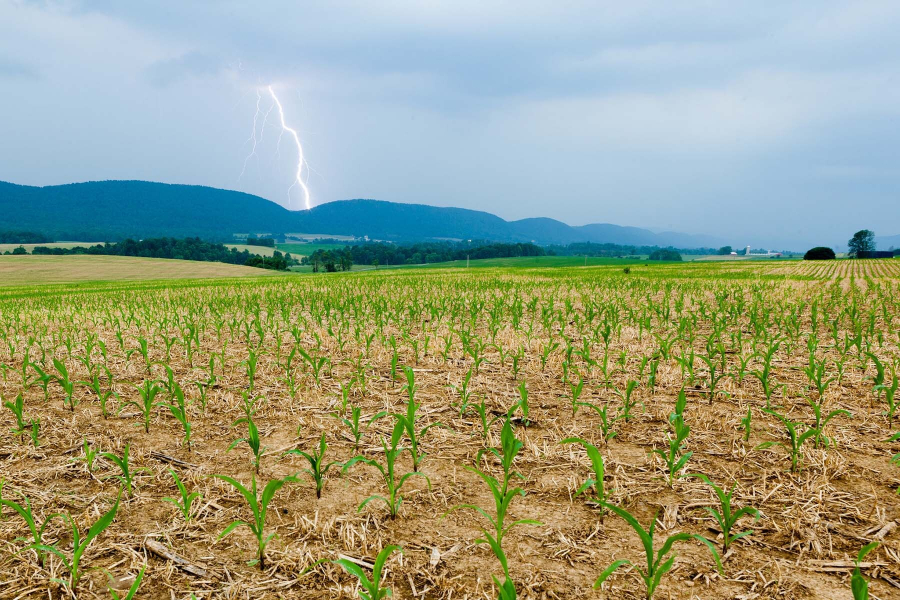A Pennsylvania farm helps protect the Bay
Tools like no-till farming help ease agriculture’s effects on water quality

Lightning strikes, signaling a coming storm at Schrack Dairy Farm in Loganton, Pennsylvania. Owner Jim Harbach practices no-till farming—a method that leaves the soil undisturbed from the fall harvest to spring planting—along with other sustainable efforts to improve soil quality on the farm that has been in his wife's family for 12 generations, since 1773. Close to one-quarter of the land in the Chesapeake region is used for agricultural production, providing us with food and fiber, natural spaces and a multitude of economic and environmental benefits.
But agriculture is also the largest source of nutrient and sediment pollution entering the Bay’s waters. Over-irrigating farmland, over-tilling soil and over-applying fertilizers and pesticides can push pollution into local waterways. Agricultural “best management practices,” or BMPs, are tools that farmers can use to reduce the runoff of pollution. Techniques like cover crops help prevent soil erosion, while streamside forest buffers can slow polluted runoff, stabilize stream banks and provide habitat for wildlife.
Learn more about how agriculture can affect the Chesapeake Bay and the tools farmers are using to help.

Comments
There are no comments.
Thank you!
Your comment has been received. Before it can be published, the comment will be reviewed by our team to ensure it adheres with our rules of engagement.
Back to recent stories